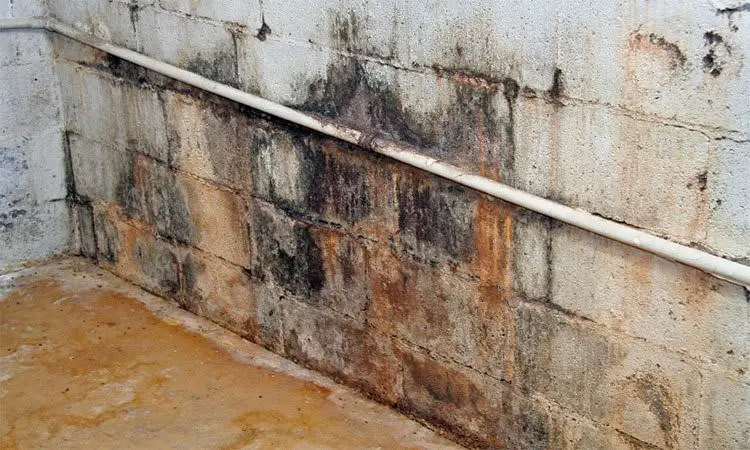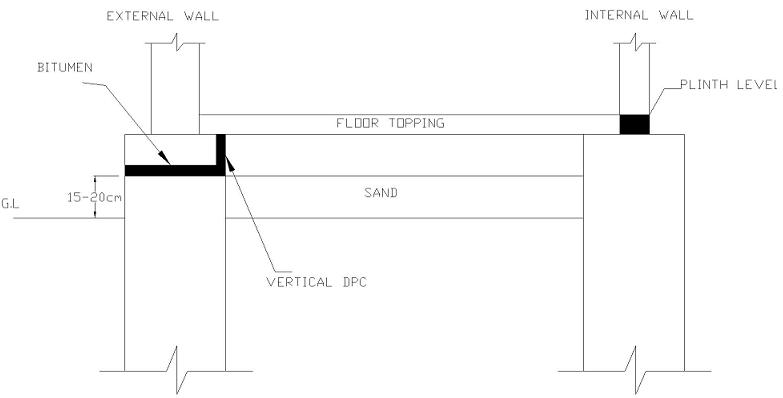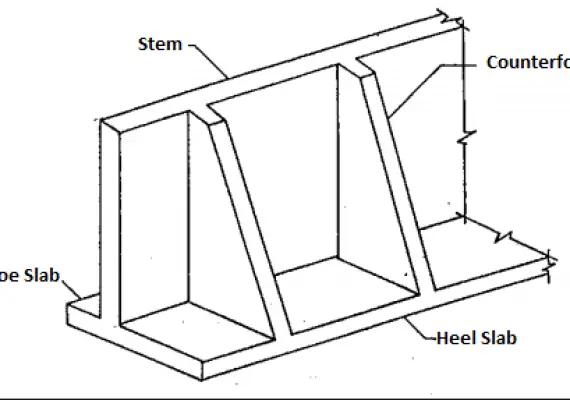Types of Damp| Causes of Dampness | Effects of Dampness in the Building | DPC
Types of Damps| Causes of Dampness | Effects of Dampness in the Building | DPC
What is Dampness
Dampness can be defined as the presence of moisture in the various parts of buildings, such as the floor wall roof, etcetera. Dampness is either formed due to condensation within the structure or intrusion from outside.
The dampness in the structures leads to unpleasant and unhygienic conditions for dwellers; therefore, sufficient care must be taken to prevent such situations.
Types of Dampness
There are several different types of damp and identifying the type will help in solving the problem in the right way.
- Condensation dampness: This is the most common type and is due to the moisture in the air
- Penetrating dampness: This is often because of rain penetrating in through gaps in the brickwork, window frames, roof and around doors
- Rising damp: Rising damp affects the ground floor rooms and basements /crawl area. The signs include decayed skirting boards and floors, stained plaster and peeling paint and wallpaper.
- Defective plumbing: When there is defects and leakage of water in guttering and pipes, cracked rendering, leaking water pipes, waste pipes and overflows
The Different Causes of Dampness.
Dampness is mainly caused due to rainwater, groundwater, and leakages from pipes.
Rainwater Causing Dampness:
Rainwater may enter the buildings due to any of the following reasons:
Water from the Rooftop Causing Dampness
If the rooftop is not covered adequately with waterproofing materials, water can easily enter it.
Improper slopes roof in the flat roof; Improper roof slopes result in the pounding of water, which results in dampness.
Water from Wall top causing Dampness
If the top of the wall is not protected with impervious layers such as concrete, etcetera, the water can easily enter it.
Water from an external wall causing Dampness
The splashing of rain on the water’s external surface may also result in the entry of water to the wall. Also, improper plastering on the external surface may lead to dampness.
Improper fixing of drainpipes.
If the rooftop’s drainpipes are not correctly fixed, what has starts to pond near the mouth of the drainpipes. This also results in darkness.
Improper construction in joints, improper slopes, sunshades in perfect wall joints, improper construction joints, and roof, etcetera leads to dampness formation.
Groundwater Causing Dampness
Generally, the buildings are constructed on the type of soil due to capillary action or have a higher groundwater table; the water may rise from the foundation, resulting in dampness at the floor level.
Leakage from Pipes.
It may be a residential or commercial building; several water pipes, soil pipes, etc. constructed in the structure.
These pipes are connected either to circulate the water or to drain off the water. The network, called the pipe, is created by joining a number of pipes, bends, etcetera, which often leads to leakage, is off waters. The leakage of water results in the formation of dampness
Other Cause of Dampness
- Adverse climate condition
- Use of poor quality of concrete (permeable concrete)
- Defective orientation and design of the structure.
- Poor workmanship and defective construction e.g., mortar joints
- Use of poor-quality bricks that absorb a lot of water.
- Moisture entrapped during construction can cause dampness
Effects of Dampness in Buildings
- Dampness cause timber or wood to rot.
- Dampness cause rebars and other metal fixtures to corrode
- It poses danger with electric wiring and installations.
- Dampness leads to deterioration of carpet & furniture’s.
- It also causes black spots on the floors and walls.
- Dampness also causes peeling and removal of plaster.
- Causes blistering and bleaching of paints.
- Dampness causes efflorescence in bricks, tiles and stones
- Dampness possess health risks to the occupants.
- It reduces value and the life of structures
Methods Used in Preventing Dampness in Building Structures
- Using damp proof course during construction
- Using surface treatment with damp proof paint
- Excellent foundation water proofing system
Damp Proof Course
What is Damp Proof Course (DPC)
Damp Proof Course, DPC is a horizontal barrier in a wall intended to resist moisture rising through the foundation’s structure.
A Damp Proof Course layer is usually laid below all masonry walls, irrespective of whether the wall is a partition wall or load-bearing wall.
The Procedure of Laying Damp Proof Course
- The surface on which the damp-proof courses laid shall be thoroughly cleaned and wetted before starting the work.
- Cement concrete of 1:1.5: 3 proportions and suitable waterproofing compound in the recommended dosage shall be mixed.
- The concrete has to be laid to a minimum thickness of 25 millimeters on the surface.
- After hardening of the concrete layer, a thin layer of seal and dry, a cement-based waterproofing compound or any other similar material, has to be applied in two coats perpendicular to each other gap of four hours between the coats.
- The damp proof course shall be laid to the walls’ full width, and the edges shall be straight even and truly vertical.
- The DPC should be laid at such a height that it is above the normal level to which water splashes from the ground when it is raining.
- The level at which the DPC starts should be a minimum of 15 centimeters above the highest ground level.
The dampness creates unhygienic conditions in the building and also reduces the strength of structural components. Damp-proof courses prevent moisture from rising up.
The ground walls provide a damp proof course between the source of dampness and the part of the building adjacent to it. The damp proof course should cover the full width of walls.


